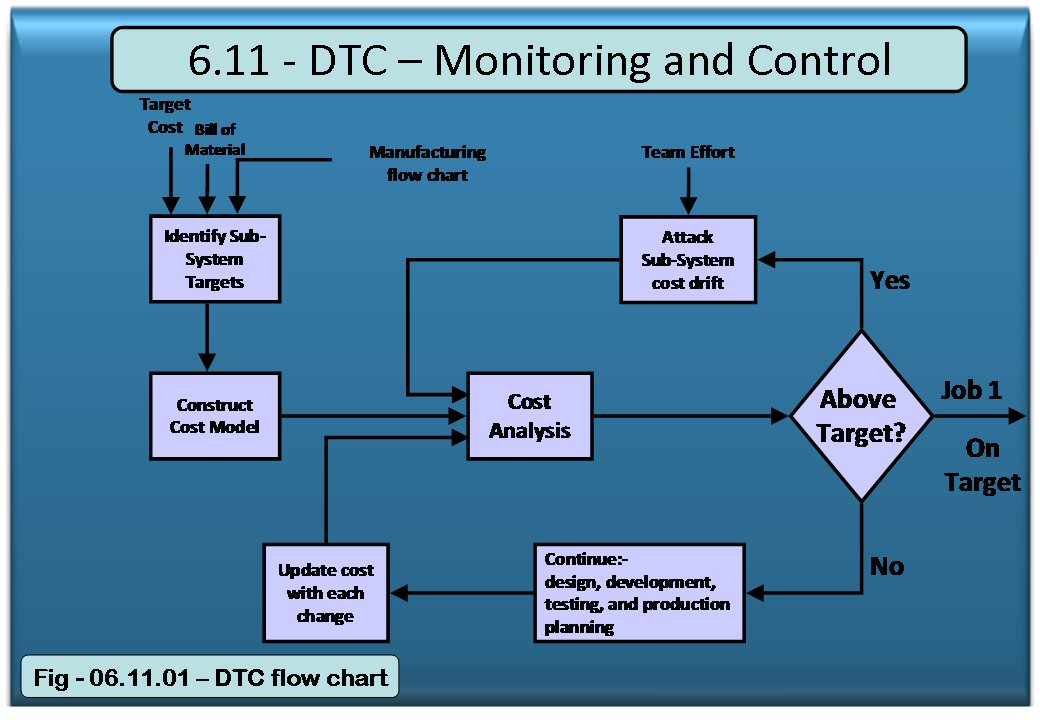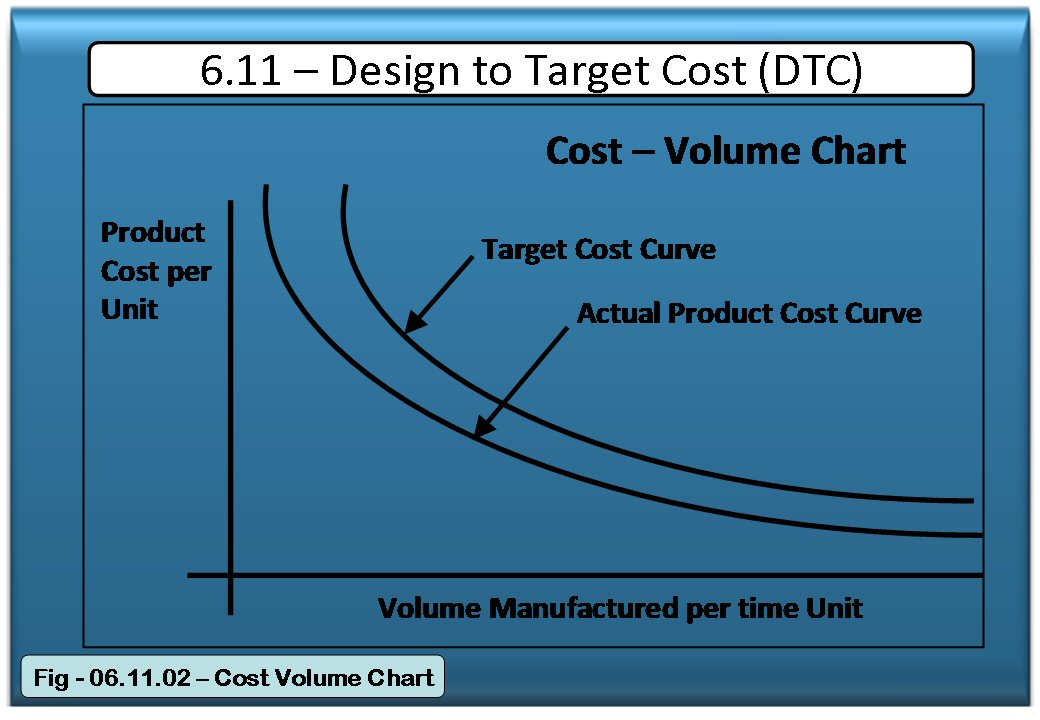6.11 - Design to Target Cost (DTC)
The basis for a successful commercial operation is:-
PRICE = TRUE Product Cost + ADDITION reflecting VALUE to customer in a market place with competing products.
- Continuous COST DRIFT, resulting in non-profitable products, occurs unless the manufacturing and supply material costs are monitored and action taken to bring costs back on target.
- Early cost estimates become quickly obsolete due to the constant dynamic change involved in the design process.
- A support system or process is needed to monitor and control future manufacturing cost to a fixed target during the product introduction process.
- Multi-disciplinary product introduction teams can quickly identify adverse variances due to either design decisions or the emergence of new facts, concentrating their efforts to attack problem sub-systems.
Target Setting and Early Estimating
A number of approaches to target setting can be applied. They fall into two main categories:-
- Top-down approach forces a view of the market price to drive the cost of the product.
- Bottom-up approach requires design, manufacturing and distribution concepts to be evaluated during the conceptual design stage.
Monitoring and Control
A cost model for each product sub-system and for the associated manufacturing process system should be created by the product introduction team who input changes to the design and monitor the effects these have on the product cost.
Changes, or facts, which cause the cost to go above the target focuses team effort on that sub-system. Methodologies such as Design for Manufacture (DFM), Design for Assembly (DFA), and Manufacturing Systems Design (MSD), can be used to re-design the sub-assembly or its manufacturing methods and bring the cost back to target.
Design to Target Cost Flow Chart

The product assembly at each stage of the design process can be exploded using a Bill of Materials (BOM) processor into sub-assemblies and then into component parts with raw material, manufacturing process operations, logistics processes and work contents documented for each component.
Manufacturing Systems Flow Charting
Manufacturing systems flow charts should be created for each component listing all:-
- process operations involved
- labour requirements / associated skills / training
- machines
- control systems including change controls
- Floor areas & overhead support services
- Standard work procedures
- Non-Value Added (NVA) activities.
In this way the COST of each activity in the whole manufacturing process system can be defined for consideration at the design stage and a total cost versus product volume chart constructed for the product for comparison with the target cost.
Monitoring actual cost against Target Cost

The manufacturing process flow chart with each process operation calibrated by cost then forms a best practice target cost control via:-
Activity Based Costing (ABC)
Continuous Process Improvement (CPI)